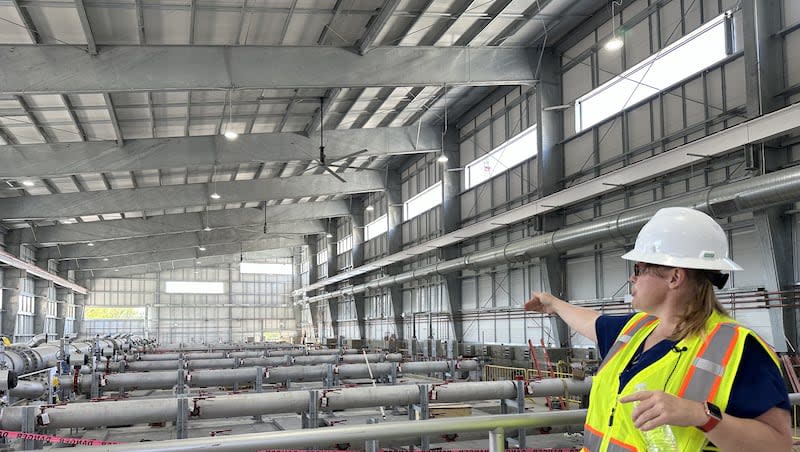Provo aiming to clean up Utah Lake with state-of-the-art wastewater treatment facility

A new secondary process wastewater treatment plant is being built that aims to help clean up Utah Lake.
The more than $83 million "state-of-the-art" facility is a collaboration between Provo, the Environmental Protection Agency and the Utah Department of Environmental Quality.
Provo's existing plant is more than 50 years old and lacks the ability to remove phosphorus and nitrogen, the two chemicals that contribute to algal blooms in the lake. New regulations also require water treatment facilities to limit phosphate levels, resulting in Provo needing an upgrade.
The upgraded facility at 1685 S. East Bay Boulevard — the same location as the old water reclamation facility — will be able to process about 16 million gallons of sewage a day.
The new structure will eventually hold three bioreactors. Two are being constructed, and the facility will be supplemented by the existing reactor until further funds can be gathered to make the third.
Sewage is brought into primary clarifiers at the existing plant and will soon be treated at the new secondary process facility. Water is then transferred to be disinfected at a UV site before being released into a canal that leads to Provo Bay.
Jenny Calderon, with Waterworks Engineers, helped design the plant and said the membrane bioreactor plant uses biological processes with microbes and bacteria to consume "the undesirable things" in the wastewater.
The new reactors have different zones that allow operators to select for different bacteria so the plant will be able to reduce phosphorus by about 80% and significantly lower nitrogen levels.
KC Becker, regional administrator for the Environmental Protection Agency, said the upgrades will ultimately lead to a cleaner Utah Lake.
"It's not the type of thing that residents may normally ever think about, but when it is up and running, they're going to see over the next few years a big improvement in the conditions in Utah Lake," she said. "And that's great to see."
Becker said the project was funded by the state's revolving fund and money from Congress's bipartisan infrastructure law, which has given out around $60 billion to various projects across the country.
John Mackey, Division of Water Quality director for the Department of Environmental Quality, said nutrients in Utah Lake will be better controlled by what Provo is doing with this investment project.
"This is a brand new plant that will be replacing a plant that is 50 years old. It was getting tired, and the technology was old. Here we are putting in new technology so we can be more effective and efficient in treating of wastewater," he said.
As the second-largest wastewater treatment plant in the state, Provo’s facility will make a “meaningful” difference through the improvements being made.
"This reduced pollution load will have an improvement in the water," he said.
Mackey described phosphorus as a type of fertilizer and nutrient that contributes to algae growth. When the system gets out of balance and there's too much fertilizer, "We get the wrong organisms flourishing, and the right organisms tend to suffer. So this will help make it harder for those harmful algae to proliferate," he said.
Calderon said water will start being put through the plant in early fall so the facility can be tested before it starts processing sewage at the end of March 2025. The city first broke ground on the new facility in 2020.

